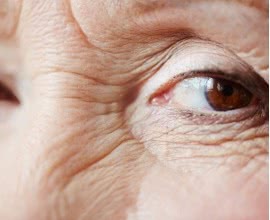Recovery from Plastic Surgery and How to Prepare
Whether it’s a facelift or tummy tuck, keeping a general timeline in mind as you go into your procedure may help you assess if your body is healing as expected. You will have to first tough out a period of bruising and swelling but that is as natural as it is important, and any shortcuts or exceptions you might make may cause more harm than good. Exactly how long will it take to get back to your everyday routine? Recovery times depend firstly on your age and health but also on postoperative care within the first month.[1]
Heed Pre-op Advice and Remember this Timeline
By the very first day, you should have already arranged for a friend or family member to pick you up and escort you home after the surgery. Keep your friends and family close those first few days to get you through the lingering effects of anesthesia. Additionally, pen in a visit with your surgeon the following day in order to redress bandages and check on incision areas. You’ll need to then prioritize rest and keep any movement around the house to an absolute minimum. For those first two weeks, sleep in, microwave some premade meals, catch up on that audiobook you started and binge-watch aplenty. You’ll be sobering up and weening off pain meds by the start of the third week, though, which means you may resume work. Yet, exercise is still out of the question.[2]
By the end of the month, you should have healed enough to return to normal day activities but keep in mind that soft tissue tightness and numbness could linger up to a year. The majority of the healing has already passed but the body continues to slowly regenerate and fix damaged cells. This is one reason to abstain from drinking and smoking for at least a quarter of the year.[3]

Know the Stages of Wound Healing
Be it a cut made by a surgical knife or kitchen knife, no matter the source of the cut it will still be a wound. As soon as the epidermis has been cut, the body initiates a process called hemostasis in order to coagulate nearby blood and form a scab. Blood vessels narrow, platelets clump together to plug the wound and fibrin proteins form a net over the coagulated blood. Coinciding inflammation purges foreign bodies from the area and thus cleans the wound from within.[4]
Eventually, the constricted vessels relax a bit and reallow blood flow into the area so that white blood cells can fight any infection causing bacteria. This will appear as clear liquid around the site of an incision. During this stage, chemical signals released by the white blood cells incite other cells to produce collagen, which acts as an elastic scaffolding from which the damaged cells can be rebuilt. All in all, it should take 6 to 8 weeks for your wound to seal up and regain a majority of its previous strength. Any prolonged tenderness, inflammation or oozing will thus be a sign of unwanted infection.[5]
Conclusion
Simply be prepared. Don’t second guess the necessity of a rented hospital bed, a new recliner, hiring a caretaker or asking family and friends for help in advance. If you have a health condition that also inhibits wound healing, like diabetes or hypertension, you will likely have to arrange for special bandages, ointments and debridement to remove dead tissue around incisions. Make it as easy as possible for yourself to get over that first month hurdle towards recovery.
Sources:
[1] Furnas, Heather. “Having Plastic Surgery? Here's How to Prepare for a Smooth Recovery.” PlasticSurgery.org, American Society of Plastic Surgeons, 23 Apr. 2019, www.plasticsurgery.org/news/blog/having-plastic-surgery-heres-how-to-pre....
[2] Improta, Robert. “Your Facelift Recovery Explained from Day 1 to Day 30.” PlasticSurgery.org, American Society of Plastic Surgeons, 4 Dec. 2018, www.plasticsurgery.org/news/blog/your-facelift-recovery-explained-from-d....
[3] Ibid.
[4] Iftikhar, Noreen. “What to Expect During the 4 Stages of Wound Healing.” Edited by Deborah Weatherspoon, Healthline, Healthline Media, 19 Dec. 2019, www.healthline.com/health/skin/stages-of-wound-healing.
[5] Ibid.














